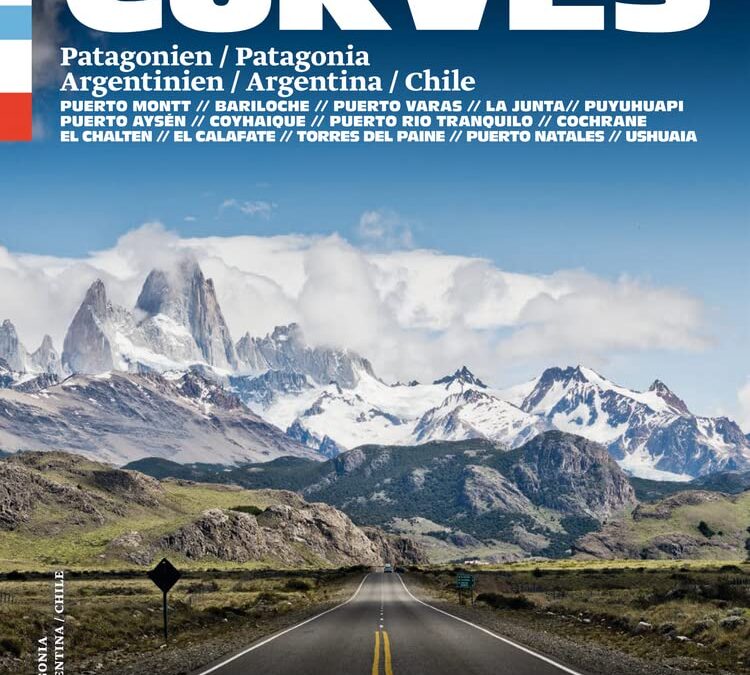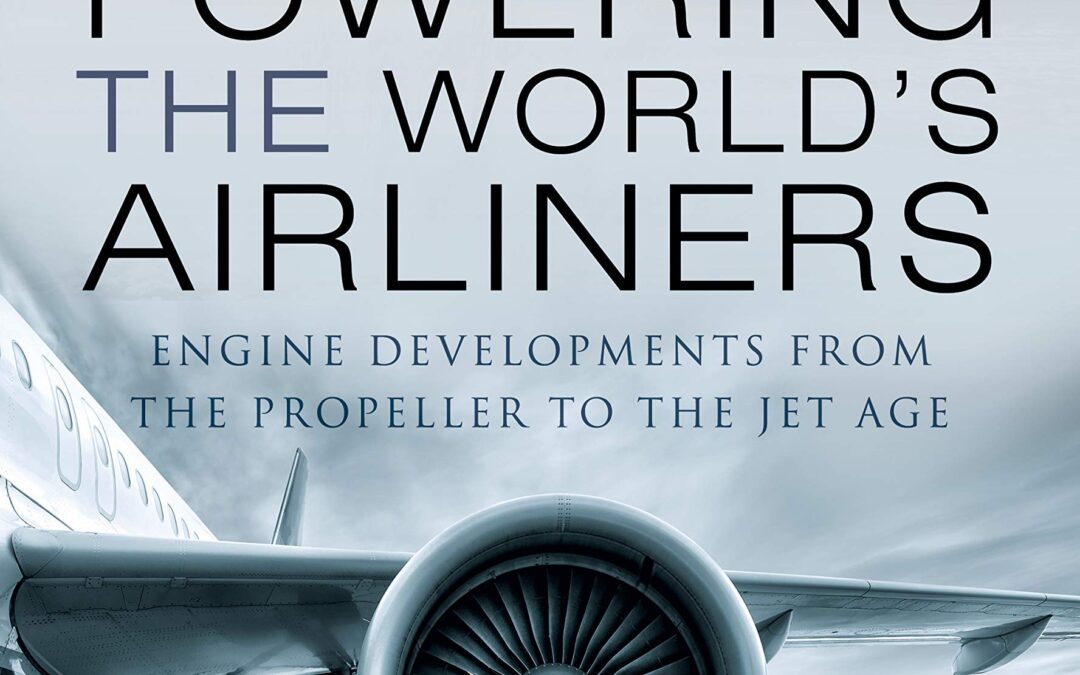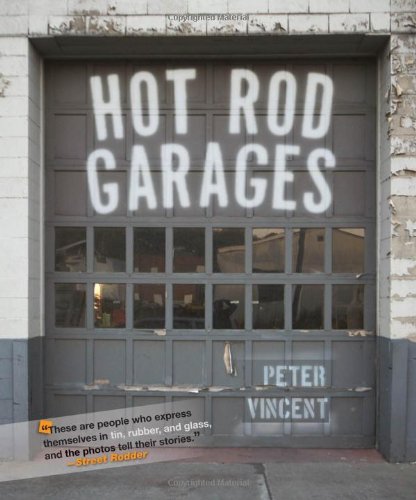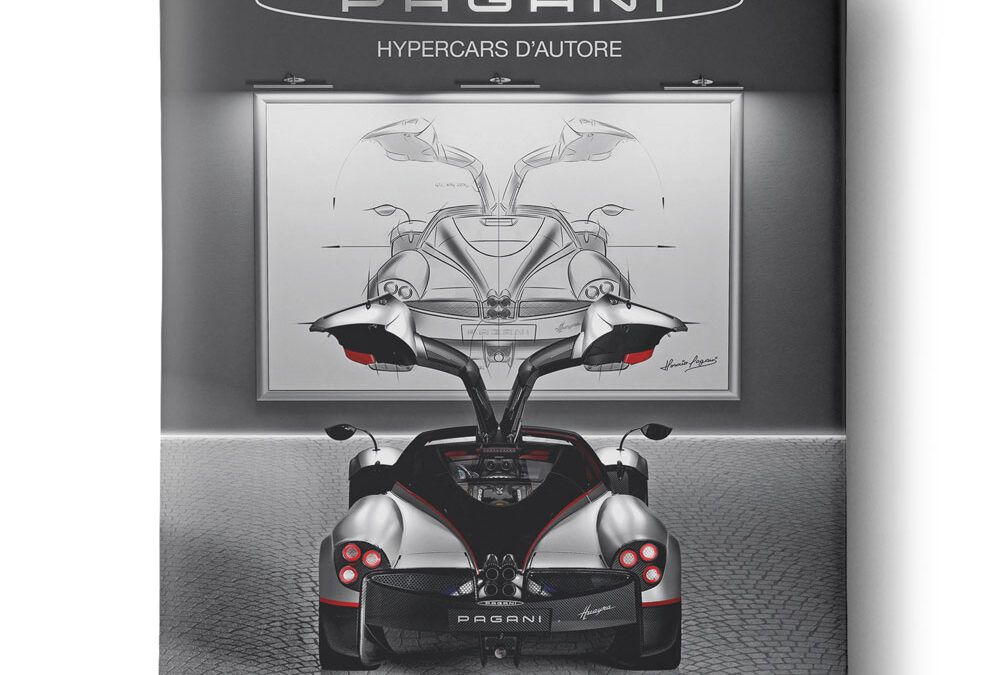
Ready for a trip to the “end of the world”? Patagonia stands for infinite and awe-inspiring landscapes, glistening glaciers and majestic peaks. Exclusively for the CURVES magazine, photographer Stefan Bogner explored the most beautiful scenic roads of this unique area.
Marvellous aerial views show exciting routes right in the middle of nowhere. No matter whether you’re driving casually through the wild steppe in your caravan or prefer the thrills of winding roads with breathtaking views: The extraordinary nature experience makes your trip most certainly an unforgettable journey.
– Patagonia: Pictures of an overwhelming landscape you have never seen like this before
– The loveliest routes and loneliest mountain roads: with maps for route planning
– Unique driving experience on endless roads: for tours by car, motorbike, and caravaning
– Exquisite recommendations: Patagonia‘s best hotels and sights
– CURVES – the passion for lovely curves: an exceptional mix of travelogue and illustrated book
Delightful driving on the world’s most beautiful roads: Patagonia for individualists. Mountain passes with a view, matchless mountain panoramas and vast untouched plateaus: the characteristic landscape at the south end of Chile and Argentina is full of highlights. “Soulful Driving” is Stefan Bogners‘ motto for leisurely road trips, where you set the pace. To top this off, he recommends comfortable accommodation, fine restaurants and sights worth seeing.
Enjoy the airflow and find out where armadillos and guanacos bid good night: With CURVES Patagonia you will explore and fall in love with scenic roads and find the best tips for tours on two or four wheels.

The first efforts of man to fly were limited by his ability to generate sufficient power to lift a heavier-than-air machine off the ground. Propulsion and thrust have therefore been the most fundamental elements in the development of aircraft engines.
From the simple propellers of the first airliners of the 1920s and 1930s, to the turboprops and turbojets of the modern era, the engines used in airliners have undergone dramatic development over a century of remarkable change. These advances are examined in detail by aeronautical engineer and author Reiner Decher, who provides a layman’s guide to the engines that have, and continue to, power the aircraft which carry millions of travelers across millions of miles each year.
Reiner Decher also looks at the development of aero engines during the Second World War and how that conflict drove innovation. He also explains the nature of wing design and how they provide lift and of the considerations of airflow over their surfaces, from the early days of the twentieth century to the present.
To enable an easy understanding of this intriguing subject, Powering the World’s Airliners is profusely illustrated, transporting readers back to the time of each major development and introducing them to the key individuals of the aero industry in each era.
After reading this comprehensive yet engaging story of the machines that power the aircraft in which we fly, no journey will ever seem quite the same again.

This book is a reprint of an important publication that was first published by the Society of Automotive Engineers in 1989. It is an authoritative and entertaining account of the evolution of the very early internal combustion engine. We at Octane Press believe it to be a critical piece of automotive history and are happy to have a revised edition to offer to our readers. If you want to understand how the engine in your favorite machine came to exist, this book and Diesel’s Engine, the companion book by the same author, are critical additions to your library!
Internal Fire is the captivating history of the internal combustion engine and the creative individuals who brought it to life. From gunpowder to diesel, the development of these early powerhouses has been recorded from all sides. The influences of new technologies, patents, and obtainable fuels, as well as a growing understanding of the very nature of heat itself are all explored.
Internal Fire is not intended as a textbook, but as the well-researched and readable chronicle of a mechanical servant that has greatly influenced life in the 20th century and beyond.
You will find in this comprehensive book:
■ Gunpowder and Steam
■ Air Engines
■ Thermodynamics: Carnot Charts a Course
■ Patents: Origin and Influence
■ Internal-Combustion Engines: 1791-1813
■ Searching and Perfecting: 1820-1860
■ The Genesis of an Industry
■ Otto and Langen
■ Otto’s Four-Stroke Cycle
■ Brayton and His “Ready Motor”
■ The Two-Stroke Cycle
■ Gas and Gasoline Engines to 1900
■ Oil Engines: An Interim Solution
■ Rudolf Diesel: The End of the Beginning
“This new and well-researched work by Lyle Cummins has at last provided a readable account of the work and people concerned in the search for a more efficient heat engine cycle.”
– The Newcomen Society Bulletin
“Thoroughly researched and eminently readable.”
– The Institute of Mechanical Engineers
“Fascinating tour through the early efforts to design a practical internal-combustion engine.”
– Road & Track

Get behind the wheel, turn the key, and feel the breeze. Hit the Road features the individuality of overland vehicles, their passionate owners, and the inspiring journeys that celebrate a life on the move.
There’s a worldwide movement of people escaping the buzz of cities and diving into nature-packed camping trips and weekends away. Recharged, some head back on Sunday evening; others keep driving for months on end as they visit new countries, experience new cultures, and collect new memories. Hit the Road excites as a collection of overland adventures that put the focus on those who have decided to leave the average life behind–and not just millennials. Their rides range from the classic Volkswagen camper to cozy refurbished Airstream trailers and unstoppable fully-equipped 4×4 Adventuremobiles. The journey continues with stunning photography from the deserts of Africa to snow-tipped mountains in Mongolia. Experts share their experiences, their tips and tricks, and their favorite campfire-friendly recipes for life on four wheels. Are you ready to hit the road?

Two Summers offers a fresh, revealing and highly personal window into the culture of Grand Prix racing as it was during the 1954 and 1955 championships. The core of this book is devoted to individual portraits of the twelve races that comprised the 1954-55 seasons in which the W 196 R participated. Of those races, Fangio won seven and Moss won two.
With its carefully-crafted observations and conclusions, given added drama by its richly-detailed illustrations, there are numerous examples of the energy and dynamic nature of these racing seasons â?? not the least being abundant evidence that Fangio was indeed the ultimate master of the art and science of racing a Grand Prix automobile, and that the W 196 R was the instrument with which he honed his skills. This book captures the decisive moments when victory – hanging in the balance – was tilted towards Fangio by his own steady hand on the wheel and iron discipline.
The W 196 R’s racing days may be long gone, but it remains a shining star of Mercedes-Benz’ participation in motor sport heritage events worldwide.
It’s this timeless appeal of the W196R that gives this book its vitality, charm and enduring attraction.

Industrial Strength Design: How Brooks Stevens Shaped Your World is a long overdue introduction to the work of visionary industrial designer Brooks Stevens (1911-1995). Believing that an industrial designer “should be a businessman, an engineer, and a stylist, in that order,” Stevens created thousands of ingenious and beautiful designs for industrial and household products — including a clothes dryer with a window in the front, a wide-mouthed peanut butter jar, and the Oscar Mayer Wienermobile. (“There’s nothing more aerodynamic than a wiener,” he explained.) He invented a precursor to the SUV by turning a Jeep into a station wagon after World War II, and streamlined steam irons so that they resembled aircraft. It was Brooks Stevens who, in 1954, coined the phrase “planned obsolescence,” defining it as “instilling in the buyer the desire to own something a little newer, a little better, a little sooner than is necessary.” This concept has since been blamed for everything from toasters that stop working to today’s throwaway culture, but Stevens was simply recognizing the intentionally ephemeral nature of a designer’s work. Asked once to name his favorite design, he replied, “none, because every one would have to be restudied for the tastes of tomorrow.”
This book, which accompanied an exhibit at the Milwaukee Art Museum (the repository for Stevens’s papers), includes 250 illustrations of designs by Stevens and his firm, many in color. Glenn Adamson, exhibition curator, contributes detailed studies of individual designs. John Heskett, Kristina Wilson, and Jody Clowes contribute interpretive essays. Also included are a description of the Brooks Stevens Archive and several key writings by Brooks Stevens.

In Hot Rod Garages, acclaimed hot rod photographer and author Peter Vincent gives readers an intimate look inside the shops and garages of more than two dozen rod and custom builders. Unlike most hot rod books, Vincent’s takes a strictly California-centric approach in examining shops across the United States. From individuals crafting cars for their own reward to more prominent builders turning out cool rides for paying customers, Vincent and his cameras show the builders in the context of their spaces, in the process exploring how their work environments inform their creations and vice versa. Included are individuals like Pete Eastwood who have garnered attention in the hot rod press while building mostly for themselves; builders like Vern and Keith Tardel, the Kennedy Brothers, and Cole Foster with his crew at Salinas Boyz, all currently being celebrated for the traditionally styled rides they build for consumers; and high-end shops widely considered to be the cream of the industry, like Roy Brizio’s and Steve Moal’s in the Bay Area, as well as SO-CAL Speed Shop (heir to legend Alex Xydias). The result is the next best thing to being there—an exquisitely presented book that eloquently distills the varying nature of these spaces and the cars created within, revealing the countless hours spent machining, wrenching, welding, and shaping these beautiful visions to fruition.

Should you believe in UFOs (unidentified flying objects)? If you question why the subject of UFOs should be taken seriously, this book provides that answer. Fascinating evidence, new perspectives, and detailed analysis, make this a thought-provoking study for those at every level of knowledge and belief in the UFO phenomenon. Through well-researched and convincing, documented insight, discover compelling individual and mass UFO encounters, giving you a direct appreciation of the possible nature and origin of this extraordinary topic. Learn about pilot and astronaut UFO experiences, strange encounters with UFOs, alien abductions, official government and military declassified UFO documents, and future directions and research needed to better understand the phenomenon. New viewpoints are provided through an objective investigation of the alleged alien visitations of earth and authenticity of the UFO phenomenon. Should you believe? Find out.











